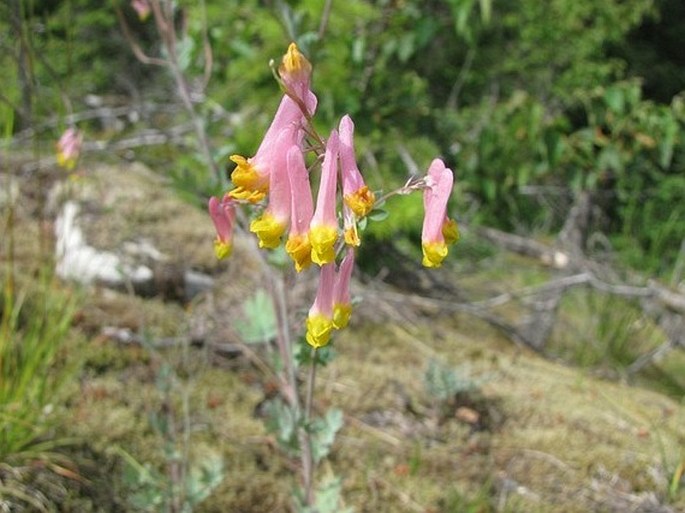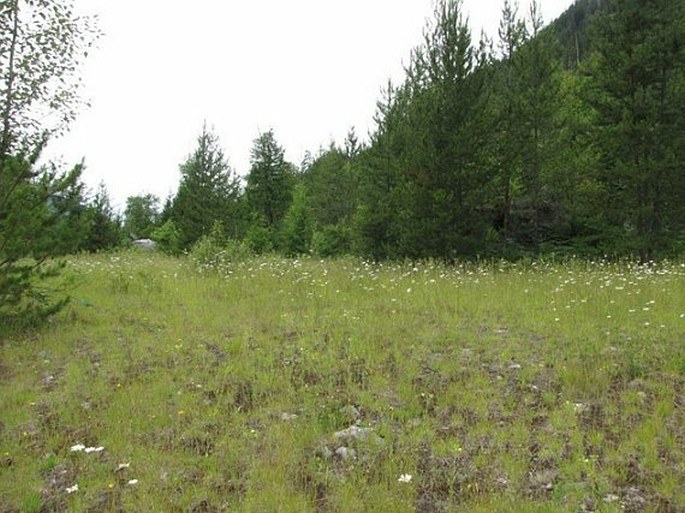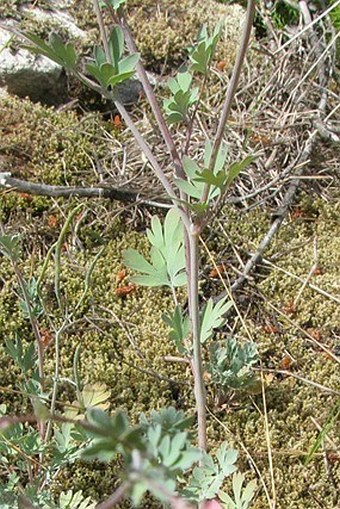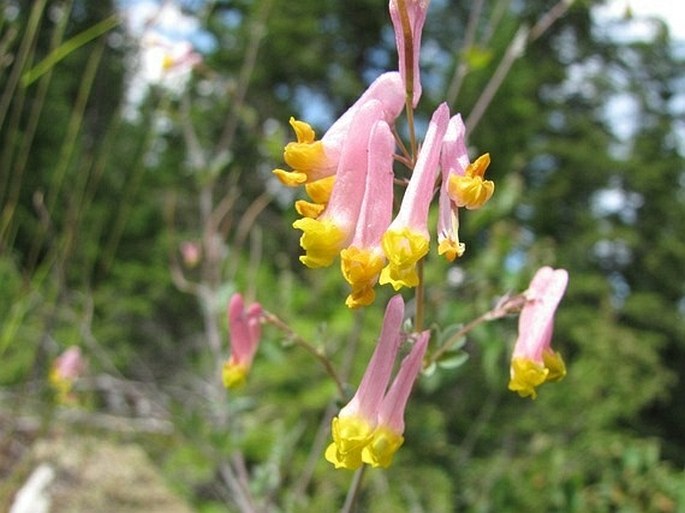CORYDALIS SEMPERVIRENS Pers. – Pink Corydalis, Pink and Yellow Corydalis, Rock Harlequin
Author
Karel Bergmann | 13. 4. 2014
Syn.: Capnoides sempervirens Borkh., Corydalis glauca Pursh, Neckeria sempervirens Neck.
Family: Papaveraceae Juss.

Distribution: North American species found in whole of Canada, in US, in Montana and most of eastern states from Minnesota to north of Georgia.
Ecology: Open woods, rocky slopes and crevices, forest clearings, burnt areas and similar disturbed areas, in shallow soil, elevations from sea level to about 1600 m. Blooms in June and July.


Description: Biennial herb, 30–60(–80) cm tall, from somewhat succulent roots. Stem erect, branched, pale green to pinkish, hairless. Leaves alternate, lower leaves petiolate, upper ones sessile, bluish green, compound, divided in 3 sharply toothed segments, 1–2 cm long. Inflorescence is a terminal raceme, 1–8-flowered, borne in leaf axils; bracts inconspicuous, 2–5 mm, narrowly elliptic; flowers purplish pink with yellow tips, 12–20 mm long, slender pedicels erect, flowers nodding; sepals 2, petals 4, 2 inner, 2 outer, spur 2–5 mm long on outer petal; stamens 6; pistil 1. The fruit is a capsule, erect, 2–4 cm long; seeds 1 mm, rough surface.
Threat and protection: It is an endangered species in Illinois, Indiana, Iowa, Kentucky, Rhode Island, and Tennessee.
Use: Iroquois reportedly used a decoction of this plant to alleviate haemorrhoids.
Note: The genus contains about 80 species from temperate regions of Eurasia and North America.

These images were taken in Canada, British Columbia, Burton (June 2010).






